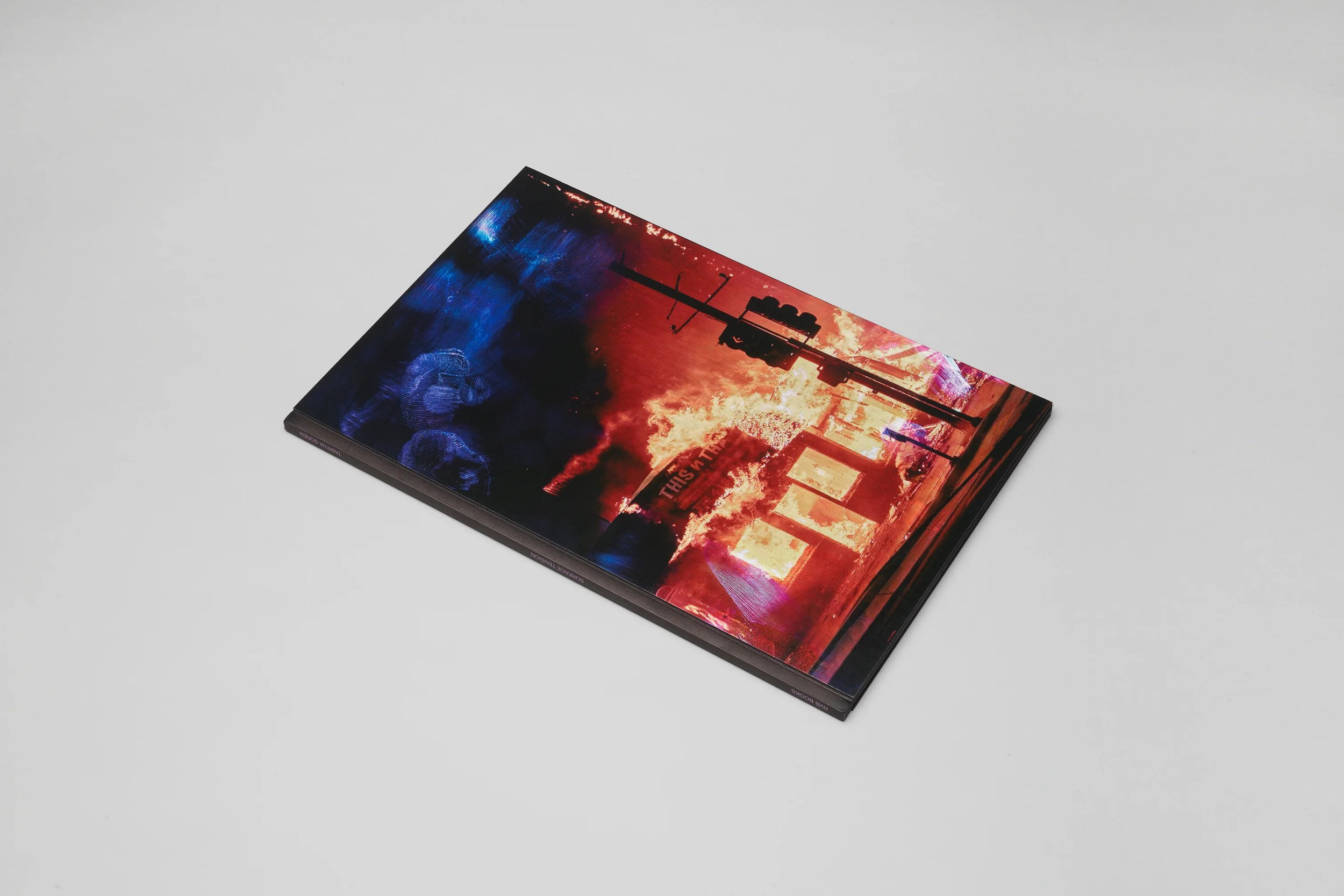Tabitha Soren considers the integrity of our interaction with images of crisis on our screens
British Journal of Photography
September 2021
Tabitha Soren, westernjournal.com/california-highway-fire-shutdown/, 2019 © Tabitha Soren
Since 2014, Tabitha Soren has been photographing her iPad screen with an 8x10 view camera in raking light to reveal the residue left behind by her fingerprints as images from her social media, text messages, or web history appear below. “The subjects pictured beneath the surface record our culture while the smears of fingerprints record our lives, our flitting attentions,” explains Soren. “They map how we spend our time.” Many of us spent the last year tethered to our computers, phones, and tablets—often the only means of connecting with loved ones, our communities, and the world at large—imbuing Soren’s project, Surface Tension, with even greater poignance and meaning. The work prompts us to critically consider the time we spend consumed by these technologies and the implications surrounding this increase in mediated experience.
This September, Paris-based RVB Books will publish a monograph devoted to Surface Tension. Though the overall scope of this multi-year project is wide, the book necessitated a narrow selection. “The edit is very urgent, almost apocalyptic,” says Soren. “After the Book of Job year we all experienced thanks to Covid, we felt like sticking to the images that screamed ‘emergency’ made the most sense.” On the front cover, fingerprints merge with billowing, black smoke. Long, iridescent smudges on the back cover feel meteoric, like falling stars, as two cars burn in the background. Flipping through the book, images of landscapes and buildings ablaze, protestors in the streets, police lights, and officers creating human barricades overwhelm the viewer. “The social injustice and environmental destruction images all have the same tone and made the sequencing quite seamless,” Soren continues. “It is an understatement to say that we humans are not doing well. I wanted the book’s sequence to reflect that.”
In exhibitions, Soren’s Surface Tension pictures are large, even monumental, in scale, forcing the viewer to confront visceral evidence—the “oily, messy, teary and sweaty” as she describes it—of our untiring interactions with the screens of our devices. “The human markings are seemingly at odds with the chilly detachment and objectivity of the information that flows towards us, unrelentingly,” she explains. “If I don’t amplify them, this conflict won’t be pronounced enough.” Soren and RVB adeptly translate this experience from the walls, conveying the project’s concerns through the book medium. Closed, the book is slightly larger than the average iPad, which enables easy delving into the richly textured photographs, while alluding to the scale and experience of the device. Highly glossy paper and UV varnish is used throughout and the reproductions are surrounded by thin, black borders, also evoking tablet and cell phone screens. Full-page reproductions where the on-screen content is relatively legible are combined with highly magnified details emphasizing the physicality of our interactions with these devices, eschewing obvious context. “There are one or two places where the complete image is never shown,” she tells me. “At first, my reaction was to try to find a place for the full frame image in the book. However, I grew to like the relationship between only showing glimpses, details in the case of a book, of the scene. It was conceptually germane to connect the superficial experience of experiencing life online to the partial details we selected for the book.”
In her essay for Surface Tension, Jia Tolentino writes: “We want desperately to be human in the face of our cold inanimate translator. We hope that somehow the act of witnessing will make us more human, and not less.” Reading this for the first time, Soren recalls thinking “‘yes! That’s it! That’s what I’ve learned spending six years making this work.’ It was as if she was inside my brain….” The disquieting message underlying Soren’s seductive work will remind me to be truly present during upcoming in-person and real-world engagements and to actively reflect on the effects of my considerable screen time.







